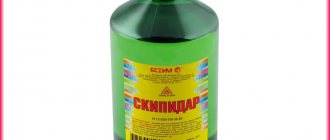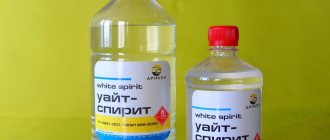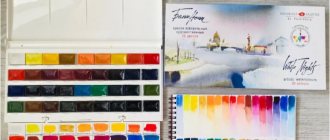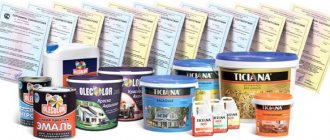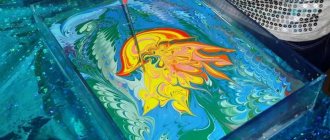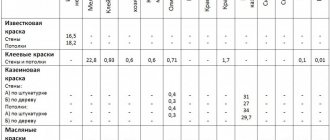Painting is not just a form of creativity, but also one of the favorite leisure activities for children and adults. As a rule, a person gets involved in artistic creativity from childhood, as he begins to be attracted to bright colors that can be manipulated at his discretion.
Often, adults also suddenly discover a penchant for drawing and try to develop it. In any case, drawing has a lot of useful qualities, both developmental and educational. We are not yet talking about the fact that painting contributes to the formation of complex thought processes.
A novice artist purchases water-based paints for himself. These include watercolors or gouaches. Having learned the basics of painting techniques, he switches to acrylic paints, which have many specific features.
But experienced artists try to preserve the traditions of their predecessors, since oil painting was practiced in ancient times.
Today, it is unlikely that a parent will give his child oil paints if he is just beginning to show an interest in creativity.
But if a child starts studying at an art school, then he will probably need experience working with different types of materials, including oil paints.
Basic information
Absolutely any paint for painting consists of a binder and pigment, presented in powder form. The pigment in acrylic, watercolor and oil paints is the same, but the bases are different.
For example, watercolors are made from gum arabic, honey, glycerin, dextrin or ox bile.
The binder in gouache is fruit gum, in tempera it is casein, and in acrylic paints it is polyacrylic resin. For hundreds of years, the recipe for making oil paints has not changed. They are made on the basis of linseed, nut or poppy oil, wax and resin.
Pigments and fillers are crushed and then brought to a liquid state using a thinner. Modern formulations are distinguished by the presence of additional ingredients and modifiers.
They can improve the adhesion of components, replace expensive pigment, and regulate the viscosity or drying speed of paint. Paint that is applied to canvas or other substrate contains liquid. Some of this liquid is absorbed into the base, and the rest evaporates.
Only the hardened fraction remains on the base, preserving the relief that the artist gave it.
Oil had no analogues for a long time, since such a dye with a high viscosity index was ideal for artistic creativity, and the image obtained with oil paints was reliably fixed on the canvas.
An example of this is the paintings exhibited in every art museum. These paintings are several hundred years old. In addition, oil paints do not change shade over time, so they accurately and believably convey the color reality of the surrounding world.
As you know, before each artist made his own paints, which significantly complicated the process of painting. Today, artistic materials are presented in all their diversity.
It should be noted that oil paints are more expensive than, for example, gouaches or watercolors.
That is why the form of release of oil paints can be different. They are sold not only in sets, but also in individual tubes corresponding to certain shades.
By purchasing paint individually, the artist can optimize costs when painting. But the costs are not limited to purchasing paint, as other consumables are also needed. In general, oil painting is considered a fairly expensive activity.
Oil paints are not suitable for children, especially if the child is just beginning to learn the basics of artistic creativity.
Firstly, not every parent is ready to spend a lot of money on banal entertainment, which can be replaced by painting with watercolors.
Secondly, oil paints contain substances that are unsafe for children. Typically, oil painting is done by those artists who have sufficiently honed their skills and have decent experience.
Pros and cons of oil-based paints
The advantages of oil-based paints include:
- versatility;
- long service life - from 5 years;
- low maintenance requirements;
- good hiding power;
- strength;
- reliability;
- good adhesion to the painted surface;
- high degree of filling and moderate density - as a result, economical consumption;
- protection of the treated surface;
- resistance to low temperatures and high humidity;
- low price;
- a wide range of.
Disadvantages of oil-based paints include:
- presence of a strong unpleasant odor;
- long drying period (up to 2 days);
- poor elasticity;
- high fire hazard;
- lack of throughput (such a coating does not allow the treated surface to “breathe”, because of this, small cracks and bubbles may appear on the painted walls, and the coating itself may begin to peel and peel);
- lack of vapor permeability (this is especially detrimental to the microclimate of a building when painting on wood);
- yellowing of the coating (over time, the drying oil appears on top of the pigment, as a result of which the painted surface fades and begins to change color - yellowness appears on it, it loses its presentable appearance).
Controversial issues include the impact of oil-based coatings on human health. Materials made from natural ingredients of organic origin are harmless. And substances of inorganic origin are toxic - they have a toxic effect on the human body and can provoke an allergic reaction (this only applies to interior painting work).
To minimize the likelihood of negative health effects, you need to regularly ventilate areas where there are painted surfaces.
Features of the story
Oil paints appeared several thousand years ago, so no one can say for sure what exactly was the starting point in their history.
Traces of a substance similar to oil were recorded on the oldest monument of painting - the Bamiyan Buddha statue (Afghanistan). Its approximate age is about 27 centuries.
Unfortunately, history does not know a single name with which the invention of paints is associated.
Europe learned the technology of making oil paints quite a long time ago, but we are talking about the popularization of oil painting. In this vein, it is worth noting such a Flemish artist as Jan van Eyck. His work dates back to the middle of the 15th century. Let us make a reservation once again: we are not talking about the appearance of paints in Europe, but about the blossoming of their popularity.
Thus, the name of Jan van Eyck is associated with the technique of improving dyes for oil paints.
Naturally, he used the first prototypes in his works, as a result of which Eick’s paintings were radically different from the paintings of his contemporaries. From this point on, realism comes to the fore. The artist's work of that time is comparable in realism to modern photographs.
The new technique invented by the Flemish artist quickly spread throughout Europe. In particular, it gained popularity in France and Germany. A decade later, she came to Italy, where a new trend gave a powerful impetus to the development of an entire cultural movement, better known as the Renaissance.
Since this period, oil has been considered the main material of a true painter. Many world masterpieces are painted with oil paints. A prime example is Leonardo da Vinci's extraordinary Mona Lisa. The apogee of the popularity of oil painting was not fleeting. It continues to this day, that is, it lasts for six centuries.
Time cannot but leave its mark on the development of art. Since the end of the last century, oil painting has ceased to be one of the artist’s bohemian occupations and today is a common amateur hobby.
There are several reasons for this change in status:
- Increased well-being;
- Focus on creative needs and hobbies;
- Availability of material;
- The emergence of simplified oil painting techniques.
Application
Drying oil, which ensures the binding of pigment particles (is a mineral flour), always remains in the upper part of the container. Therefore, the composition should be thoroughly mixed before use.
Oil paints GOST 30884-2003 can be used to paint:
- Tree,
- Metal,
- Plastic,
- Concrete surfaces,
- Other natural and artificial materials.
They are applicable in rooms with high levels of humidity, as they are not afraid of moisture. Since oil-based coatings are inert to temperature changes, they are used in unheated rooms.
Basic properties of oil paints
It is impossible to say anything definitely positive or definitely negative about oil paints.
On the one hand, they have a number of advantages that allow them not to lose popularity and be in demand for several centuries.
On the other hand, the time factor leaves its negative imprints, and this cannot be ignored.
For example, paint must be applied in a thin layer, since thick layers crack, and the resulting surface film is easily washed off with water and destroyed in alkali.
The peculiarities of the Russian climate also have a negative impact on the use of oil. Oil paints are afraid of low negative temperatures. Modern technologies make it possible to minimize the effect of destructive factors.
High-temperature drying (in the range from 250 to 300 degrees) allows you to create a film that is highly resistant to alkalis.
Currently, the variety of shades of oil paints is much wider than in those days when artists prepared their own materials. The list of colors is replenished with transparent shades used for glazing.
Opaque (overlay) tones are capable of completely covering the underlying layers. The first types of paints are great for mixing, as they do not reduce the saturation of the mixture.
When mixing opaque paints, you can get dull pictures if you choose the colors poorly.
A bright color of oil paint can be achieved by increasing the concentration of the desired pigment, but manufacturers very rarely take such a step.
Firstly, high consumption of dye leads to an increase in the cost of paint, which cannot boast of being cheap anyway.
Secondly, high concentrations can be harmful to health, as the toxicity of the pigment increases.
As a result, you have to obtain the desired color by mixing the appropriate paints. The result is not always the same.
In some cases, with the right color ratio, the combination looks richer and richer than a single-component paint.
However, a decrease in color saturation also occurs.
Oil paintings boast several unique properties.
The first property is the extremely long drying time of the paint. It will take two to three weeks for a tightening film to form on the surface, but complete polymerization of the paint layer occurs after several years.
The film on the surface is strong, but at the same time fragile. The paint will crack even with the slightest deformation of the canvas.
Not everyone knows that the weight of the painting changes during the polymerization process.
In approximately the first half of the period, the canvas becomes heavier, and then the paint dries out and the weight of the painting decreases.
Linseed oil is the most common ingredient for making paints. But paints made with linseed oil, when storing paintings in dark rooms, noticeably darken, as if they are fading.
A yellow tint is added to them.
If the painting is placed in a lighted room, then with prolonged exposure to sunlight, the saturation of the colors is restored.
The main thing for picture keepers is to follow the restoration technology, since for some pigments direct sunlight can be destructive.
Manufacturers of oil paints managed to solve this problem only partially. It was suggested to use refined flaxseed oil. It does not give that characteristic yellow tint that is usual, but at the same time the film covering the surface becomes even more fragile.
Popular oil paint manufacturers on the Russian market
Marshall
One of the most popular companies whose products are represented on the construction and finishing market is Marshall, a manufacturer of precessional coatings. The paint applied to the surface is inert even to chemical detergents.
Tikkurila
The world-famous Finnish concern Tikkurila offers no less high-quality compositions. For example, Minerall gamma is suitable for painting any mineral substrates. A distinctive feature of the paint is its resistance to light and exposure to natural factors.
Empils
The Russian company Empils, created at the end of the nineteenth century, has long and firmly established itself. The company's products are used by professional builders. A useful property is versatility.
Alpina
A worthy place in the list is occupied by paints from the German company Alpina, offered on the Russian market. They are mostly used when painting wood products.
Advantages and disadvantages
An experienced artist does not need to evaluate the quality of oil paints, since he knows how to work with them, taking into account their characteristics.
For a novice painter, it is important to know what advantages and disadvantages a given material has in order to decide for yourself whether it is worth trying to master oil painting or hone in on alternative types of creativity.
First, let's note a number of advantages that oil paints provide.
- Easy to use. This statement is not objective, since it is generally accepted that it is best to start artistic activity with water-soluble paints. But many artists never cease to claim that learning the basics of oil painting is much easier than, for example, working with acrylic, and paints such as gouache or watercolor are completely unsuitable for real painting.
- Paints take a long time to dry. At first glance this may seem like a drawback. Many parents do not buy oil for their children precisely for this reason. But to begin practice, the fact that oil paints take a long time to dry is a real treasure. The fact is that the artist gets the opportunity to slowly mix colors until he gets the desired shade. It will not be pushed by a lack of time; there is no need to apply strokes in a hurry, fearing that the paint will harden. In addition, the time required to correct the composition increases.
- Oil paints, unlike gouaches and polyacrylic paints, do not change shades after hardening. Artists have repeatedly spoken out about such complexity as changing shades. It is this phenomenon that does not allow us to convey all the natural beauty. In order for the drawing to be realistic, it is necessary to predict in advance in what colors the composition will take its final form. This requires a lot of experience and skill, and also makes the work much more difficult. The fashion for oil paints is partly due to such quality as the preservation of shades.
- When working with oil, the artist has the opportunity to adjust the strokes. Excess relief can be removed using a palette knife. Of course, adjustments cannot be carried out ad infinitum, since frequent edits will lead to damage to the canvas. But even such restrictions do not prevent you from using the possibilities of oil that are not available for watercolor.
- Finally, a significant advantage of oil paints is that works can be stored for a long time. Practice shows that if a painting is properly cared for, it will last for decades. If you do not take into account paintings from art museums that are several hundred years old, a successfully completed amateur work will long remind you of the first victories of a novice artist.
It cannot be said that oil painting is accessible to everyone.
Only the most persistent professionals were able to master the technique of working with oil. Even a basic technique is not as simple as it might seem.
This leads to some of the disadvantages that come with working with oil.
- It may be difficult to mix colors. An experienced artist plans the result based on his practice. Meanwhile, simply mixing paint can cause the main components to enter into chemical reactions, as a result of which, instead of a new shade, banal “dirt” will form on the canvas. Only knowledge of the correct proportions will allow you to paint a complete picture.
- Drying time is regarded not only as an advantage, but also as a disadvantage. History knows many examples when paintings took months to paint. Even one layer of oil paint takes a long time to dry, so using the glaze technique requires time from the artist. Lack of patience in most cases leads to damage to the shades.
- The presence of toxic components in paints limits the category of users. Parents prefer to choose safe and environmentally friendly materials for their children. Only after the child begins to show zeal and ability to use basic drawing techniques can one move on to alternative materials. Some manufacturers hide potential dangers for advertising purposes. White lead is a toxic substance. But even if there are none, the paint necessarily contains various solvents.
Brushes and accessories
To work with oil paints, you need harder brushes; the best brushes are those with kolinsky bristles, bristles and synthetics. For large-format canvases it is good to use bristles, for small paintings - synthetic brushes.
In oil painting, master artists use 3 types of synthetic brushes:
- Thin round brushes for working on details (about a millimeter);
- Flat, dense brushes for smooth, wide writing (1-1.5 cm);
- A soft fan brush for smoothing out furrows.
For oil painting beginners, a set of brushes is perfect, which will eliminate the problems of selection, but if you don’t want to take a set, then you should take the following brushes:
- Flat bristle brush (No. 5) - for wide rectangular strokes and painting areas with thick paint of intense color;
- Round bristle brush (No. 8) - for creating an initial composition, applying paint over large areas and long relief strokes;
- A flat short bristle brush (No. 2), a synthetic brush (No. 4) or a kolinsky brush (No. 1-2-3-4) with a rounded end - for processing small details.
When working with oil paint, you can notice how it flows under the metal bushing of the brush. In order not to have to worry about washing this part, a new brush must first be dipped in sunflower or linseed oil, pulled out and placed upside down for a day. This time is enough for the oil to be absorbed. The next day, the brush can be washed, but the absorbed oil will still remain and will no longer allow the paint to penetrate deeper, which will significantly extend the life of the brush.
Types of paints
In the simplest classification, oil paints can be divided into ordinary, artistic and construction.
Although they have common ingredients, they are not interchangeable.
That is, paints used in construction or repair work cannot be used to paint a picture. Without going into details, it can be noted that artistic paints are distinguished by higher quality and more expensive components.
Unfortunately, the safety indicator decreases with increasing quality. Thus, industrial paints are considered the safest.
If you want to protect your leisure time, you should choose paints with an improved formulation. They do not contain toxic elements, but safety comes at the expense of the quality of the resulting image.
Let's return to the selection of paints for children. Parents cannot know for sure how seriously the desire to draw develops in them. In this case, you can buy oil paints that dry quickly.
The child will be exposed to toxins for a short time and will therefore receive a relatively small dose of harmful elements.
There are other classifications. Classification by painting experience involves dividing paints into materials for beginners and experienced artists.
Beginners or art students are presented with a choice of kits with a minimal set of colors. The palette of these paints includes 12 different shades.
Those who have already mastered the simplest techniques of working with oil can switch to sets of 24 colors.
Professional artists buy oil paints in tubes, especially if there is a specialized store nearby. Over time, such artists may have several dozen different shades in their arsenal.
In the classification based on consistency, paints are divided into:
- Dilutable;
- Not diluted.
In diluted paints, compaction of the middle layer is observed as a result of sedimentation of powdered pigment. A similar phenomenon occurs when paint is stored for a long time.
Non-thinned paints can be distinguished by their consistency. They are usually sold in a more liquid form. The thinner for oil paints is drying oil, turpentine or kerosene. After dilution, the paint will take longer to harden.
Artistic paints, depending on the components, are divided into amateur, semi-professional and professional.
For the average buyer, it is important to distinguish good paints from bad ones without going into the intricacies of technical characteristics.
A list of signs of low-quality material will help you cope with this task.
- The paint is too thin or, conversely, too thick. The suspension contains lumps with compactions. The paste contains liquid fractions.
- The paint begins to crack even before it has completely dried.
- The layer of paint lies unevenly on the canvas, in stripes. The base areas are painted unevenly.
- Oil leakage from the paste is normal only before using paint. After mixing, the paste should become homogeneous. If paint delamination is observed during the painting process, this indicates that the oil has begun to flow out again. This is a sign of low-quality material.
Terms of use
For creativity you will need paints, canvas, brushes and a palette for mixing colors. You can purchase pre-stretched, primed canvas. Some artists write on paper, but such a base quickly absorbs wet dye, so it must be dense. It is also recommended to pre-prime the paper base with glue or a special primer.
Everything you need should be kept in a place prepared for storage.
How to paint in oils
Each artist has his own technique.
There are 2 directions on how to paint with oil paints:
- Multilayer overlay. It is complex and requires a large amount of material. Care and patience are required to avoid uneven matte areas.
- Overlay in 1 layer. The technique is used more often than the first, because The material consumption in this case is less. It is necessary to take into account the nuance - after the single layer dries, cracks may form. For this reason, experienced artists apply a second coat after complete drying.
Painting requires the preparation of proper lighting.
Step-by-step painting:
- The outline of the future exhibition is drawn on the canvas. Coal is used because... in case of an error, it can be easily erased with a piece of cloth.
- Painting a picture begins with drawing the most striking elements. The darkest and lightest fragments of the composition are highlighted. The necessary tones and shadows are obtained by constantly mixing shades.
- After completing the sketch, they move on to drawing the details. The entire canvas is gradually involved; you cannot focus on just one fragment.
- Amendments can be made within 3 days, during which time complete hardening occurs. Even after removing the failed area with a spatula and applying a new coat, the exposure will remain strong.
A dried painting should not be wiped with a rag or touched with hands.
Does it need to be diluted?
To create relief multilayer exposures, it is permissible to work with undiluted compositions. The application technique may require the use of thick pigment.
For painting in other directions it is necessary to apply light, sometimes transparent, strokes. To soften the structure of the composition, a solvent is added. By diluting, you can add shine and transparency to the layers on the canvas, as well as extend or shorten the drying time of the exposure.
Another reason for using solvents: due to the thick consistency, the compositions become dense, and it becomes necessary to dilute them.
What is used as a solvent
The connecting link of the pigment is oil, so special oil-based compounds are used for dilution.
Types of thinners:
- Linseed oil. Odorless, safe for health. Maintains the brightness and thickness of colors and does not require much consumption. The product gives a matte finish after drying and reduces the strength of the layer.
- Oil-based varnishes with diluted resin (fir, mastic, dammar). They add density, increasing the strength of attachment to the canvas. Enhances color and glossy shine. They reduce drying time, but the paint loses its texture. Used for painting miniatures, fixing the bottom layer for the purpose of applying the next one (glaze).
- "Double". Consists of an oil base and varnish. The product thickens the paint, improves mixing, and increases the drying period. Emphasizes brightness and depth of color. The surface of the strokes retains its shine and reflects light evenly.
- "Tee". Contains oil, varnish and thinner (pinene is most often used). Increases work efficiency: thickens strokes, improves mixing, increases strength, maintains shine. It also increases the drying time of the layer.
- Pinen. Transparent, turpentine-based thinner, odorless. The product does not cause yellowing of paints, gives the layer transparency and lightness, and speeds up drying. However, artists do not use pinene as the only thinner when painting the entire picture, otherwise the layers will become dull and lose strength.
- "White Spirit". The disadvantage of the solvent is its pungent odor. The product is used for cleaning brushes and palettes and degreasing canvas. When diluted, the paint quickly evaporates, giving the strokes subtlety, but it disrupts the structure of the dye, making the layer matte and short-lived.
With limited work time, the question arises of how to quickly dry the painting. In such cases, varnishes and thinners are used to speed up drying. Depending on the technique and the desired result, various combinations of agents are used.
Criterias of choice
Works created with high-quality oil paints can be stored for several centuries. A novice artist will sooner or later have a question related to the right choice of paint.
It is advisable to consider the main criteria by which the material is evaluated.
- Light fastness. Lightfastness refers to the resistance of a paint layer to exposure to sunlight. Some materials can fade when exposed to long enough light. Choosing the right brand of oil paint will allow you to store the painting for a long time and not be afraid that the image will fade after a year or two. Lightfastness is indicated on the packaging. It is marked with the signs “+” or “*”. One star or one plus sign indicates low light fastness. This paint will fade within a year. Lightfastness "**" guarantees rich color for 25 years. The "***" parameter is the highest. The manufacturer marks the products with three stars, guaranteeing color preservation for 100 years.
- Covering power. A parameter such as hiding power determines whether the paint will lay down in a dense relief layer or will be mixed with other colors, allowing you to work using the glaze technique. Covering power is indicated by a pictogram. The white square corresponds to transparent paint, through which the underlying layer is visible. Such paints serve mainly to convey the depth of color. A half-filled square indicates an average coverage rate. The paint is also applied in a second layer to obtain a peculiar iridescent shade. Textured paints with which you can create reliefs are marked with a black square. Such paints, even after dilution, do not lose their covering properties.
- Compound. The basic composition of oil paints is quite simple. It contains pigment and oil. The color saturation depends on the pigment, so it is what prevents the paint from turning into dirt on the canvas. It is desirable that the paint contains pigments such as umber, ocher, mars and sienna. They are considered the best among the rest. Oil, waxes or natural resin play the role of a binding element. The use of alder, linseed or poppy oil eliminates the possibility of paints yellowing over time. Modifiers are also used to increase durability during installation (turpentine, balm, mastic).
Artistic oil paints
|
Oil paints are a mixture of pigment and binder. The composition of the binder for oil paints includes:
- Oil
- Wax solution - creates a matte finish (added only to certain pigments for fluidity)
- Natural resins (dammara, mastic) - increase the brightness of paints
- Additives that increase the durability of the paint layer (turpentine, balsam, mastic)
When paint is applied to canvas, the binder hardens, forming a film on the surface that holds particles of colored pigment, preventing it from “falling off” from the surface.
OIL IS THE MOST IMPORTANT COMPONENT OF PAINT
After pigments, oil is the most important component of paint. The characteristics of the finished paint will directly depend on its quality and the quality of its processing. As a rule, only large plants with high-precision and high-performance equipment can make high-quality binders.
For the production of highly artistic paints, linseed, poppy, safflower, and nut oils are used. The advantage of these oils is that they do not turn yellow over time and provide high light fastness to the paint.
The lower the level of paint, the simpler its binder, the less it is bleached and processed. The higher the level of paint, the more guaranteed the result: exactly as much oil as is needed for this particular pigment, which means that when the oil dries, we will get a durable and durable coating of bright, rich tones.
If, when squeezing oil paint onto the palette, first the oil flows out, and then the paint, this means that the oil is not sufficiently bound to the pigment and is easily separated from it in the tube. Such oil is quickly absorbed by the soil, causing the paint layer to wither.
— What are “finely ground paints”?
All art paints are finely ground, since the pigment is ground on special machines into the finest powder. This is art. You can either under rub or over rub the pigment, which will immediately affect the quality of the paint.
— What are water-borne oil paints?
The key difference between such paints and conventional ones is that they can be diluted with water using a special additive. Such paints are not represented in Peredvizhniki due to low demand.
— What is the shelf life of oil paints?
Finished oil paints are stored for an average of 1 to 5 years without changing their qualities, that is, without hardening, maintaining normal thickness and color. After this time, oil paints may thicken a little and lose their shine, but they can be quickly restored with the help of thinners.
— How long does it take oil paints to dry?
It would be more correct to say that it polymerizes, hardens. The speed of polymerization of oil painting paints is influenced by both the binder and the pigment: paints prepared with driers or polymerized oils quickly form a film, and more slowly with ordinary purified oils. The manufacturer tries to equalize the polymerization rate of its paints within the series.
On average, regular oil paint layers form a film in 5-7 days, depending on environmental factors. But complete polymerization of the paint layer occurs no earlier than after a year.
DIFFERENCES IN OIL PAINTS
As a rule, each manufacturer produces two or three lines of oil paints. The first line is Studio, academic, designed for students and amateurs, the second and third are designed for professionals. The third is a line that stands out from a number of professional lines with its properties.
All three lines are represented in the Peredvizhniki network. They include paints from both Russian and foreign manufacturers. They are distributed among the lines in accordance with how they were defined by the manufacturer.
Series belonging to the Academy line, compared with series from the Pro line:
- Has a narrower color palette
- Accordingly, it offers fewer options for coverage and transparency
- Has one, two-price paint category
- Uses quite a lot of pigment imitations
- Has a simpler binder
- The pigment concentration is lower than in the professional line
ACADEMY line
is presented on the PEREDVIZHNIK network in the following series:
- AKADEMIE OL COLOR series, manufacturer Schmincke, Germany
- VAN GOGH series ,
manufacturer Talens, Netherlands - GEORGIAN series, manufacturer Daler-rowney, UK
- CLASSICO series, manufacturer MAIMERI, Italy
- LADOGA series, manufacturer Artistic Paints Plant (ZHK), Russia
- STUDIO series, manufacturer Gamma, Russia
- series OIL PAINT FOR PAINTING, manufacturer Podolsk Art Center, Russia
PROFI line
is represented on the PEREDVIZHNIK network by the following series::
- NORMA PROFESSIONAL series, manufacturer Schmincke, Germany
- REMBRANDT series ,
manufacturer Talens, Netherlands - ARTISTS series, manufacturer Daler-rowney, UK
- MASTER CLASS series, manufacturer Artistic Paints Plant (ZHK), Russia
- OLD MASTER series, manufacturer Gamma, Russia
TOP PROFI line
:
- MUSSINI series, manufacturer Schmincke, Germany
MORE DETAILS ABOUT PROFESSIONAL OIL PAINTS
NORMA PROFESSIONAL series, manufacturer Schmincke, Germany
- 84 colors
in 35 ml tubes; of which 6 colors are imitation - Exceptionally high light fastness
- The color range is well balanced. It has an almost equal distribution of different color groups and a good balance between opaque, translucent and transparent colors.
- High concentration of pigment. As a result, little paint consumption
- Color stability when mixing different colors of the series
- Excellent paint transfer performance
- The series has three price categories. 50% of flowers belong to the first price category
The production of paints involves thorough grinding in a three-roll mill, then the finished product matures for 3 months, and only after that the paint is packaged in tubes.
The paint from the NORMA PROFESSIONAL series is perfect for those who like to paint using the alla prima (wet) technique.
MUSSINI series, manufacturer Schmincke, Germany
- 101 colors
in 35 ml tubes, including 42 unique transparent colors - Not a single imitation
- The series has eight price groups
- Maximum pigment concentration (higher than NORMA PROFESSIONAL)
- Dammar resin is added to the binder. This increases the brightness of the colors and distinguishes this series from the rest
Other indicators are the same as NORMA PROFESSIONAL
The MUSSINI series paint is perfect for those who like to paint with glaze.
An alternative to the NORMA series is the REMBRANDT series, manufactured by Talens, the Netherlands.
- 120 colors
in 40 ml tubes - The series has five price groups
- Other characteristics are similar to NORMA PROFESSIONAL. Therefore, when choosing paints from these series, you need to be guided by which color from this rich color palette is suitable for the buyer to solve a specific creative problem.
— Why does Schminke Academy oil differ in the price category from Schminke Norma oil?
1. The main reason is the price of the pigment used and its concentration. Even if both AKADEMIE OL COLOR and NORMA PROFESSIONAL use the same pigment, its concentration in NORMA is higher than in AKADEMIE.
2. The second reason is different binders: in AKADEMIE OL it is processed high-quality sunflower and linseed oil, in NORMA it is a combination of various high-quality oils
3.
In NORMA, the paint “ripens” in deckles (barrels) for 3 months and only after that is poured into tubes. At AKADEMIE OL, paint is poured into tubes immediately after production.
— Why does Nevskaya Palitra oil differ so much in the price category from Gamma oil and Podolsk oil?
This is Nevskaya Palita’s assessment of its paint, based on the fact that:
— The plant has its own laboratory, where quality control is carried out at all stages of production.
— The plant’s materials are used to carry out the most important work, including the restoration of the most valuable works of art and architectural monuments: St. Basil’s Cathedral, the Grand Kremlin Palace, the Cathedral of Christ the Savior, paintings from the collections of the State Hermitage, the State Tretyakov Gallery, ancient Russian icons
— The plant is 80 years old. During this time, we have accumulated a wealth of experience in the production of art materials.
— How is Ladoga different from the Master Class?
In the “Ladoga” series, less expensive pigments are predominantly used, which are analogues (letter A on the label) of the expensive cadmium and cobalt pigments of the Master Class series. At the same time, the earth paints of the “Ladoga” series (ochre, sienna, umber) include natural earths.
— Why are prices so different within the same brand?
The main reason is the price of the pigment used and its concentration.
— I have an oil painting. Can I add acrylic touches? (or vice versa)
1. Acrylic on oil
: We do not recommend doing this, since the picturesque oil layer in this case begins to play the role of soil. And the soil must dry well. If the picture is more than a year old, then:
— clean the surface with a swab containing pure pinene or white spirit (No. 2) and let it dry thoroughly. If liquid acrylic rolls into droplets on an oil surface, then dilute the acrylic with water with the addition of ox bile (the ratio of water and bile using a test method) until the paint stops rolling into droplets and begins to lay down in an even stroke.
2. Oil on acrylic.
Acrylic paint should dry well. Further, no problems arise.
— What soil is ideal for oil?
Emulsion and acrylic primers are universal and suitable for any technique.
Real oil primer, after being applied to the canvas, is recommended to be kept for up to six months for the oil to polymerize in it. If this is not done by the manufacturer, then in the future the connection between the painting layer and the ground may weaken. As a result, in case of mechanical damage, the painting layer peels off from the canvas.
— Is it possible to get transparent paint from opaque paint?
Oil paints are opaque, translucent and transparent. Oil paints allow you to work both impasto and glaze.
— Well, anyway, in short, how do some oil paints differ from others?
Recipe and workmanship. And also the pleasure of working with paints made at a high professional level.
— Is it possible to make artistic oil paint yourself? What do you need to buy for this?
Having purchased pigment and a binder for making oil paints, you can make the paint you need yourself.
Additional materials
To create an oil painting, in addition to paints, you will need: primed canvas on a stretcher, on cardboard, in a roll, or oil paper, oil brushes, palette knives, oil dishes, wooden palettes and much more. All necessary materials can be found on our network.
Useful tips
When choosing oil paints, several factors should be taken into account, and price is one of them.
A few useful tips may help a potential buyer make the right choice.
- Remember that with the help of such primary colors as red, blue, yellow, white and brown you can get different shades, so you should not rush to purchase a large number of tubes, but rather focus your efforts on mastering the technique of mixing paints.
- You may need more titanium white than you planned, so it is recommended to buy it in advance.
- The volume of the tube depends on the field of activity. If you are a beginner amateur, then a tube of 10 to 46 ml will be enough for your first time.
- High-quality paints should contain natural oils. They are much preferable to synthetic ones. The same applies to pigments.
Opportunities of oil technology
Oil is more interesting and varied than other artistic techniques. Oil paints have a huge artistic potential : the ability to sculpt textures, convey color depth, optical effects, values (range of color gradations when lightening or darkening), and retouch repeatedly. They flourish in skillful hands or under the guidance of a professional.
Painting workshops for adults
Artist Elena Barteneva invites you to individual oil painting lessons with an hourly rate (1500 rubles/hour all inclusive). Workshop address: St. Petersburg, Primorsky district, Shuvalovsky Avenue, 74/2. In just a few hours you will paint a picture, learn the laws of fine art, the secrets of craftsmanship and learn traditional techniques used in oil painting.
Oil painting techniques
- A la prima (from and to in one session with volumetric strokes)
- Glazing (translucent overlay of layers with drying)
- Scratching (scratching)
- Carnation (multilayered image of the skin)
- Grisaille (tone or monochrome painting)
- Sfumato (softening of contours as you move away)
- Dry brush (shading with stretch)
- Oil monotype (abstract print on canvas).
You can paint with oil not only with brushes, but also with a palette knife . Palette knives of different shapes are designed for brush strokes of all possible shapes. The oil technique is also attractive for beginners because (since the oil takes a long time to dry) it is possible to scrape off the damaged fragment, wipe the surface with a cloth and rewrite the failed area again.
How long does oil enamel take to dry?
The drying process takes at least a day. Some manufacturers guarantee complete drying 12-13 hours after finishing work with paint. But more often this process takes up to 30 hours.
- By the way, the drying time depends on the composition and thickness of the oil substance.
- The more concentrated it is, the faster the fixation process will take place.
- Some manufacturers recommend mixing the material with other components.
How to thin oil paint? If there are no specific instructions on the package, thick oil paint is brought to the desired condition with white spirit or turpentine. The additive should be no more than 5 percent by volume of the total mass.
